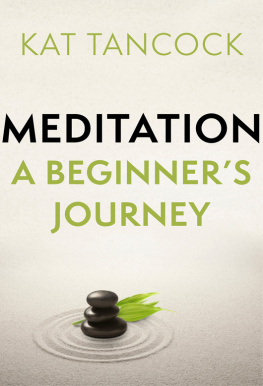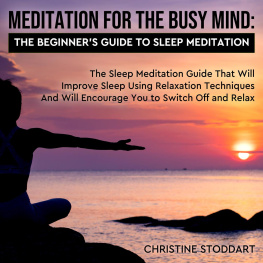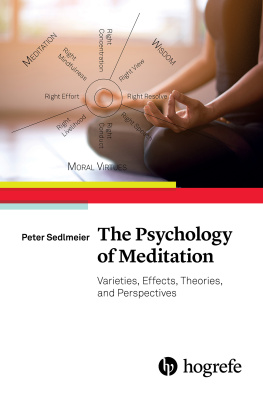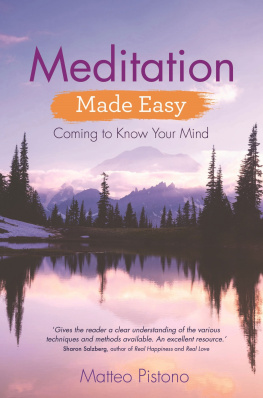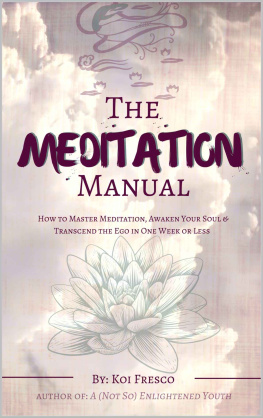When Then Zen
When Then Zen
Christine Dodrill
Introduction
Meditation is something that is very easy to experience but very difficult to explain in any way that is understandable. Historically, things that man could not explain on his own get attributed to gods. As such, religious texts that describe meditation can be very difficult to understand without context in the religion in question.
I would like to change this and make meditation more accessible. As such, I have created the When Then Zen project. This project aims to divorce meditation methods from the context of their spirituality and distill them down into what the steps to the process are.
A better way to teach meditation
At a high level, meditation is the act of practicing the separation of action and reaction and then coming back when you get distracted. A lot of the meditation methods that people have been publishing over the years are the equivalent of what works for them on their PC (tm), and as such things are generally described using whatever comparators the author of the meditation guide is comfortable with. This can lead to confusion.
The way I am teaching meditation is simple: teach the method and have people do it and see what happens. Ive decided to teach methods using Gherkin. Gherkin can be kind of strange to read if you are not used to it, so consider the game of baseball, specifically the act of the batter hitting a home run.
Feature: home run Scenario: home run As a batter In order to hit a home run Given the pitcher has thrown the ball When I swing Then I hit the ball out of the parkAs shown above, a Gherkin scenario clearly identifies who the feature is affecting, what actions they take and what things should happen to them as a result of them taking those actions. This translates very well when trying to explain some of the finer points of meditation, EG:
# from when then zen's metta feature Scenario: Nature Walking # this is optional # but it helps when you're starting # physical fitness As a meditator In order to help me connect with the environment Given a short route to walk on When I walk down the route Then I should relax and enjoy the scenery And feel the sensations of the world around mePhilosophy
At a high level, I want to not only have the When then Zen project be an approachable introduction to meditation and other similar kinds of topics. I want there to be a more normal person friendly way to get into topics that I feel are vital for people to have at their disposal. I understand that terminology can make things more confusing than it can clarify things.
So I remove a lot of the terminology except for the terms that help clarify things, or are incredibly googleable. Any terms that are left over are used in one of a few ways:
- Not leaving that term in would result in awkward back-references to the concept
- The term is similarly pronounced in English
- The term is very googleable, and things you find in searching will make sense
Some concepts are pulled in from various documents and ideas in a slightly kasmakfa manner, but overall the most confusing thing to new readers is going to be related to this comment in the anapana feature:
Note: the body means the sack of meat and bone that you are currently living inside. For the purposes of explanation of this technique, please consider what makes you yourself separate from the body you live in.
You are not your thoughts. Your thoughts are something you can witness. You are not required to give your thoughts any attention they dont need. Try not immediately associating yourself with a few negative thoughts when they come up next. Try digging through the chains of meaning to understand why they are negative and if that end result is actually truly what you want to align yourself with.
If you dont want to associate yourself with those thoughts, ideas or whatever you dont have to. My best advice to you is to just let things happen and see what its like. If something happens that you dont like, banish it from your presence and it will go away.
Expectations
At some level, I realize that by doing this I am violating some of the finer points behind the ultimate higher level reasons why meditation has been taught this way for so long. Things are explained the way they are as a result of the refinement of thousands of years of confused students and sub-par teachers. A lot of it got so ingrained in the culture that the actions themselves can be confused with the culture.
I do not plan to set too many expectations for what people will experience. When possible, I tell people to avoid having spiritual experiences.
Other Topics I Want to Cover
The following is an unordered and unsorted brain-dump of the topics I want to cover in the future:
- Yoga
- Social versions of most of the other meditations
- Thunderous Silence
- The Neutral Heart
- The finer points of leading meditation groups
I also want to create a website and eventually some kind of eBook for these articles. I feel these articles are important and that having some kind of collected reference for them would be convenient as heck.
As always, Im open to feedback and suggestions about this project. See its associated GitHub repo for more information.
Thank you for reading and be well. I can only hope that this information will be useful.
Terms
As the When Then Zen project attempts to extract techniques out of esoteric sources
In order to make these accessible to people who dont subscribe to metaphysical views
Given an open mind and a willingness to learn
And the willingness to try things that may lead you out of your comfort zone
When you read the features in this repository
Then this document contains terms and plain English definitions.
This project aims to target the average software developer, and as such terms such as stateful and side effects will be used.
Meditation
Meditation is some action that improves state of being somehow, be it by a specific kind of relaxation method or other generic work to improve well being. There are many different methods of meditation, some of them are explained in ways that are clearer or less clearer for outsiders to understand.
This definition is incredibly vague, but intentionally so. This is because meditation itself is kind of a nebulous concept. This project intends to remove a lot of the barriers to understanding meditation methods, but every person will end up creating their own method based on parts of others combined.
Side Effects
Side effects are the events that happen as a result of state-changing actions in programs. An example of a side effect is printing data to the standard out file descriptor.
State
State is effectively equivalent to human memory in the context of computer programs. An example JavaScript program that manages state follows:
// number is set to zero let number = ; // number is incremented to one number = number + ; // prints `1` console . log (number) ;
The variable named number is the state of this code.
The Body
The body refers to the body that you, the reader, are currently living inside. This guide to meditation takes the stance that a person has some kind of inner core essence of some kind (of which is largely irrelevant for the explanation of the majority of the techniques in this repository, any features that actually do benefit from those metaphors to explain the technique will have the metaphor and a detailed explanation as to what the metaphor is signifying and how to understand it).


